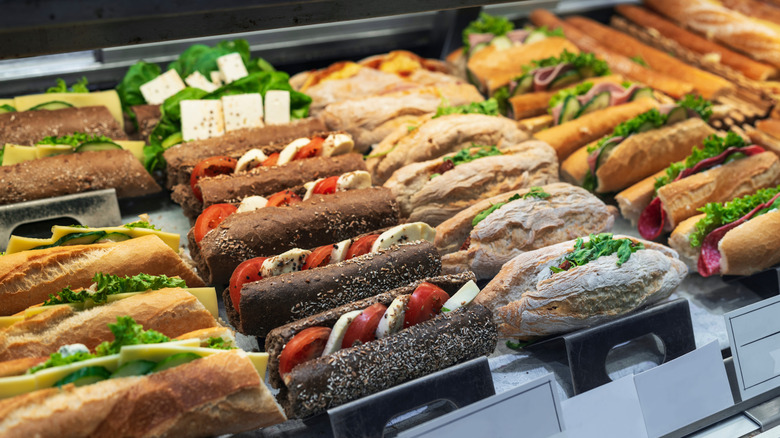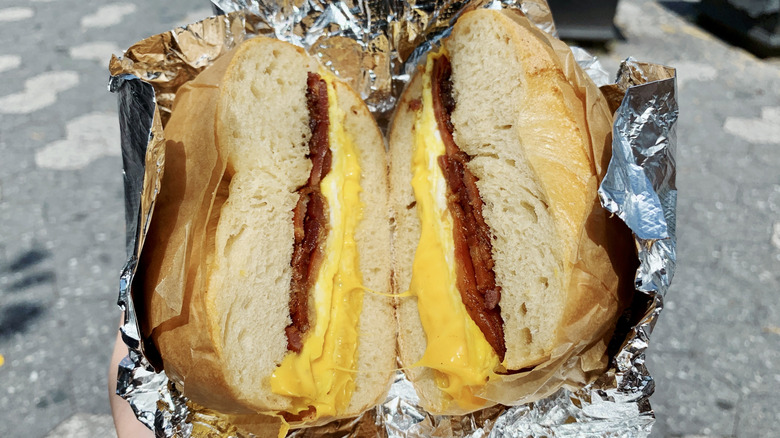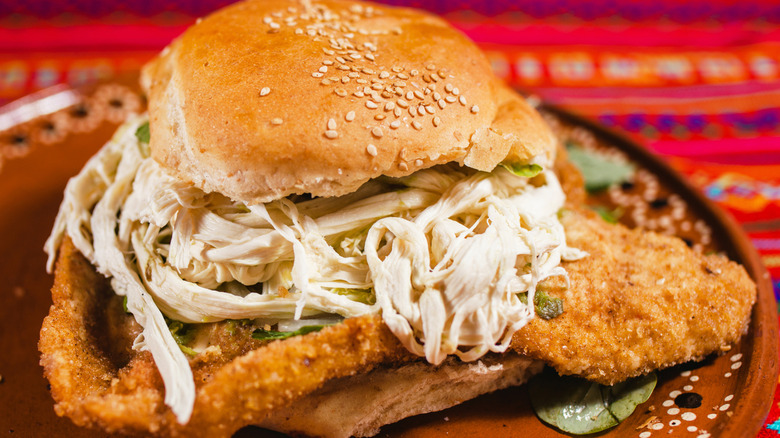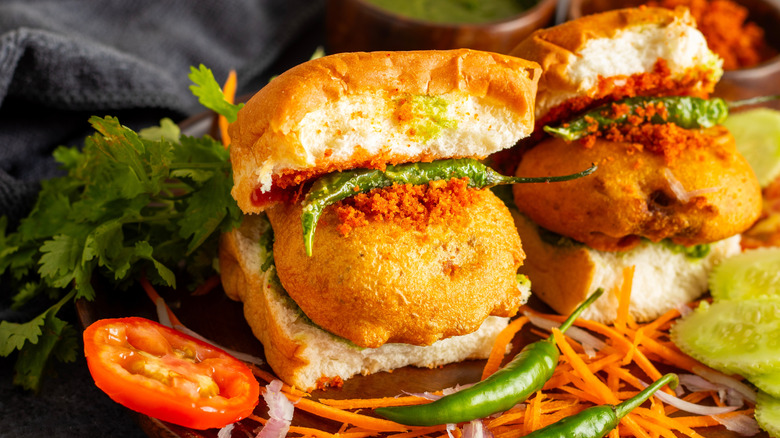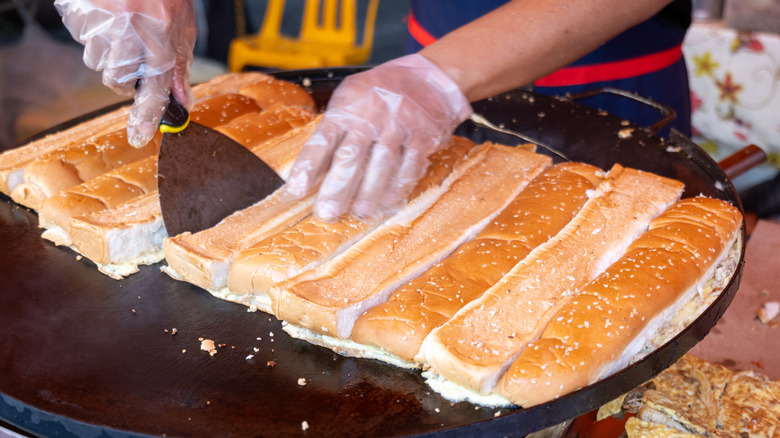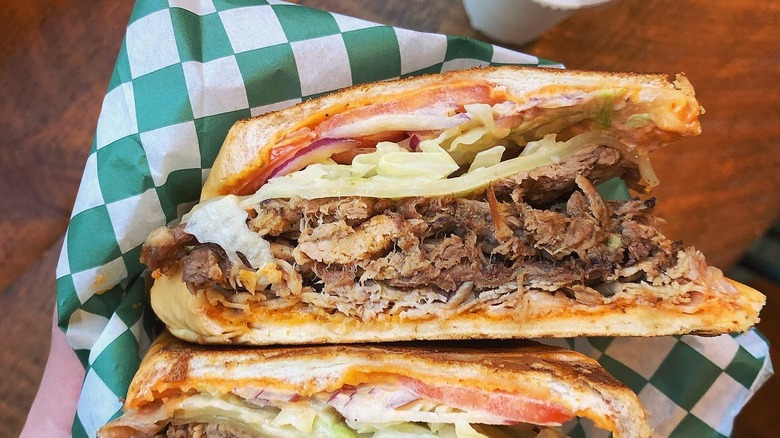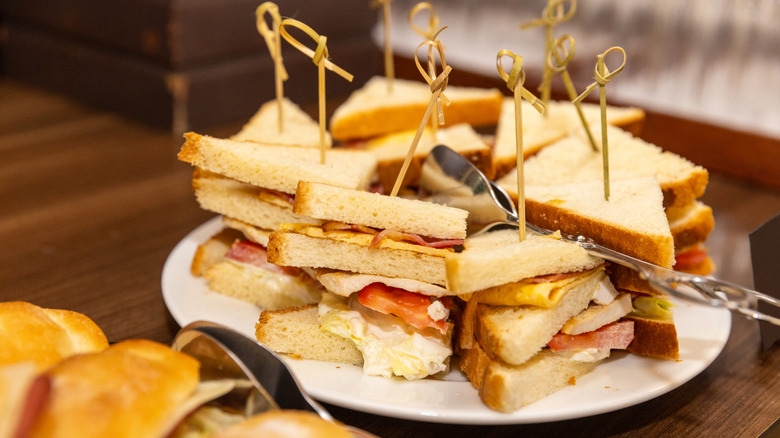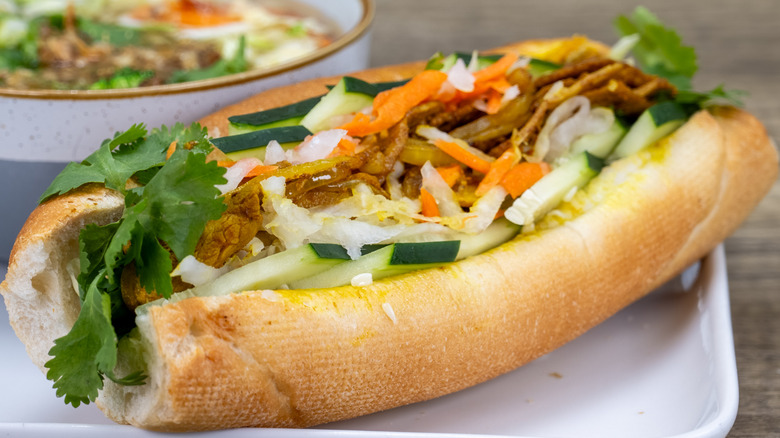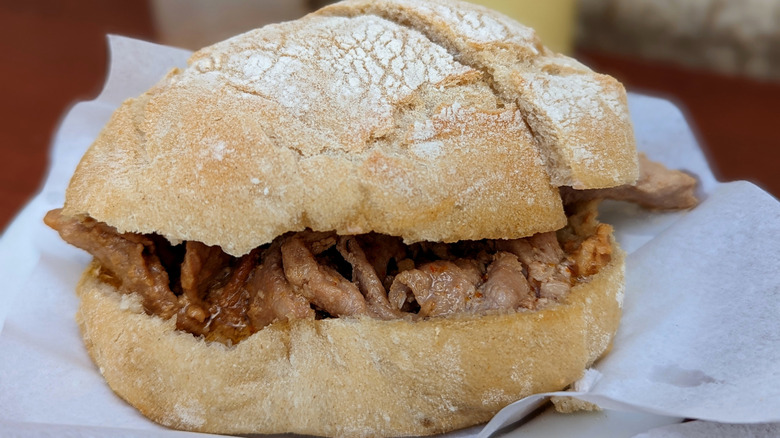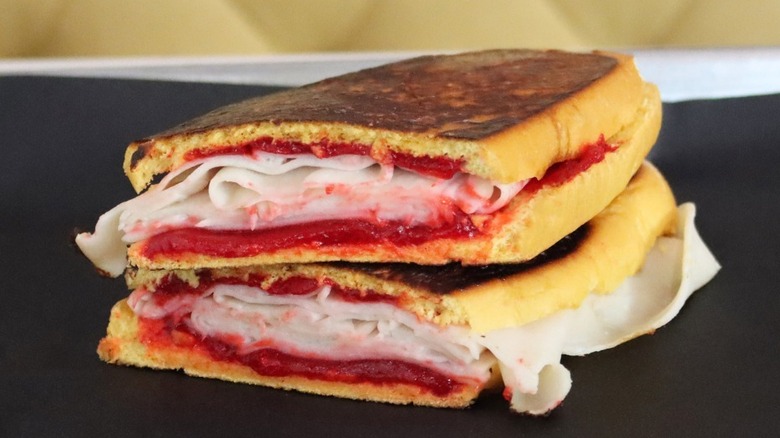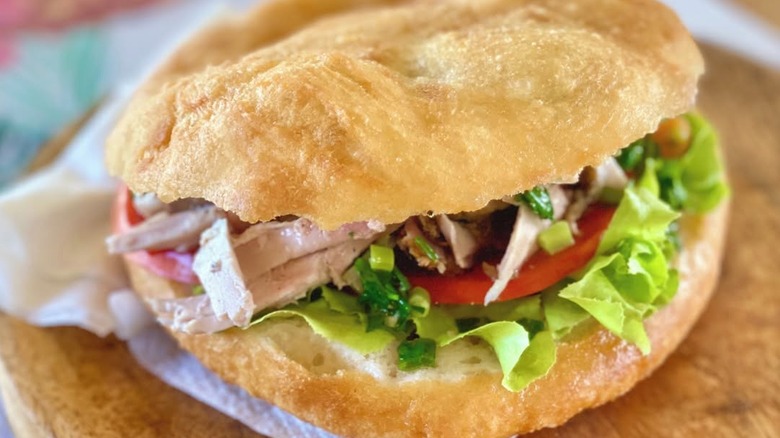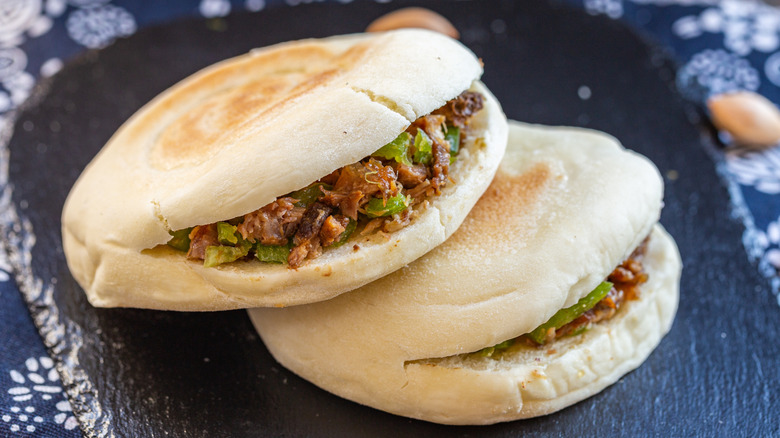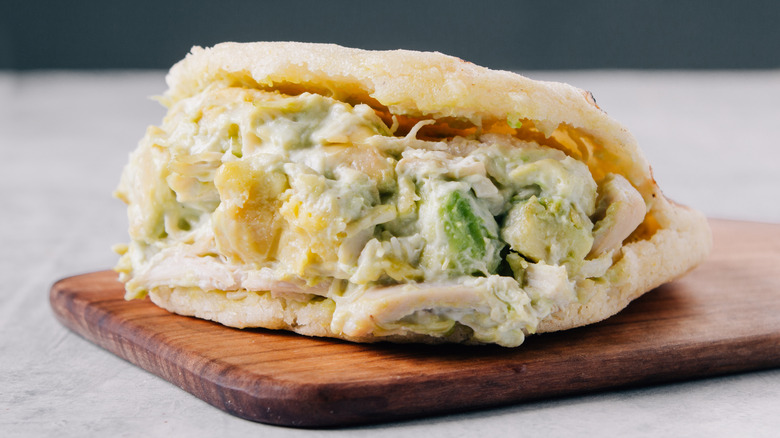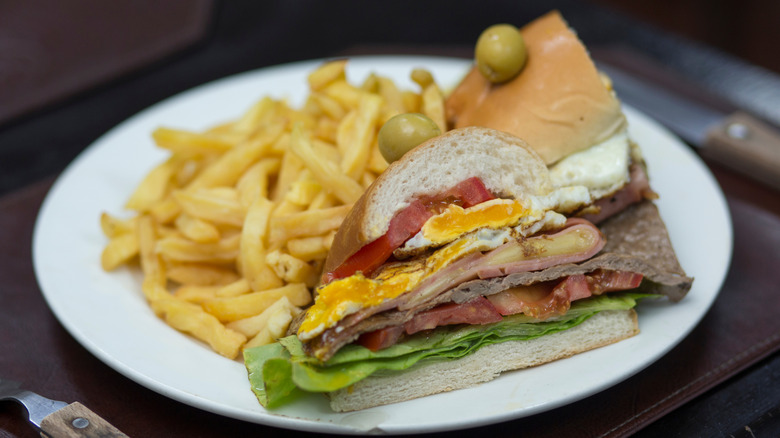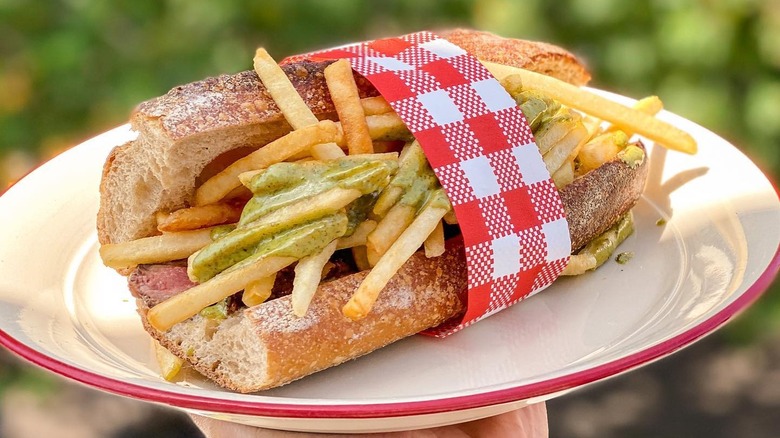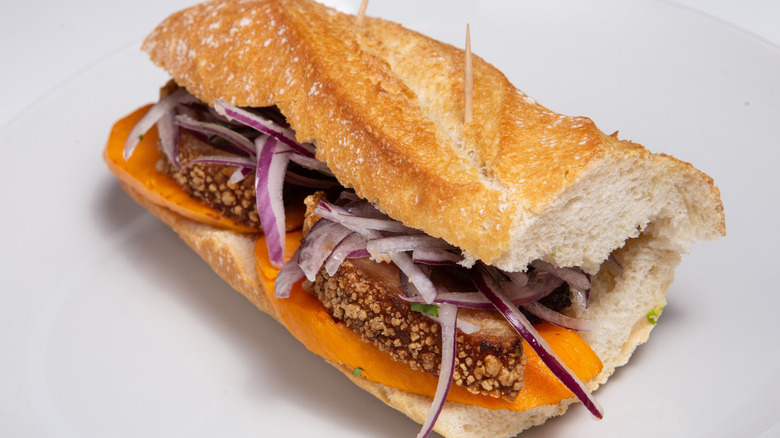Cheap Sandwiches From Around The World That Everyone Should Try
Cheap is a relative term. What costs a dollar in one country might run you 10 in another, and what feels affordable to one person may be a splurge to someone else. With rapid inflation, import tariffs, and rising food costs affecting nearly every corner of the globe, a solid, accessible meal is becoming increasingly hard to come by. Still, one category continues to deliver on taste, value, and cultural expression across borders: the humble sandwich.
A near-universal comfort, sandwiches are quick to make, easy to enjoy on the go, and endlessly adaptable. While the basic formula remains relatively consistent across the board, the variations are as diverse as the regions they come from. In this article, we're spotlighting 16 of the best cheap sandwiches from around the world that everyone needs to try — some widely known, some perhaps more niche. They're not always glamorous, but that's the best part.
Bacon, egg & cheese (USA)
New York has perfected the breakfast sandwich. Found everywhere from corner delis to your bougiest bottomless brunch, the bacon, egg, and cheese is beloved across boroughs and tax brackets as essential morning sustenance or a go-to hangover cure. The core ingredients are right in the name: crispy, smoky bacon stacked atop a fried egg with melty American cheese.
The bread and the accoutrements are where things get personal (and sometimes controversial). Some swear by the soft, squishy Kaiser roll. Others won't settle for anything less than a hearty bagel. Ketchup, mayo, and hot sauce are fair game, and asking for salt and pepper is not unheard of. The ordering of the sandwich is its own kind of ritual, often delivered in a single breath. It's efficient, it's to the point, it's New York. While rising food costs, including the ongoing egg shortage, have challenged the sandwich's historically low price point, the classic BEC still averages around just $5.
Cemita (Mexico)
Hailing from the Mexican state of Puebla, the cemita is a type of torta that should be on everyone's radar. It features a crispy, breaded cutlet (beef or chicken milanesa), avocado, Oaxaca cheese, a generous swipe of salsa, and aromatic herbs like papalo or cilantro. Its defining component, however, is the bread. The name cemita refers to both the sandwich and the roll itself, which is deeply rooted in Pueblan baking tradition. A soft, slightly sweet, and eggy enriched bread sprinkled with sesame seeds, it's been described as a cross between brioche and challah. The pillowy interior and sturdy crust of the cemita make it the ideal vehicle for its tower of fillings.
Many of the other ingredients are tightly interwoven within the culinary fabric of the region. Oaxaca cheese, or quesillo, is a signature product of southern Mexico, prized for its mozzarella-like pull and buttery flavor. Papalo, a pungent, peppery herb, adds a sharp bite that cuts through the richness, though it's often substituted with more accessible cilantro outside of Mexico. A cemita from a local street vendor will usually cost just a few U.S. dollars, making it one of the most satisfying cheap eats around.
Vada pav (India)
The vada pav is proof that a great sandwich doesn't require meat to be crave-worthy. One of Mumbai's most iconic street foods, this handheld treat is entirely plant-based and packed with flavor. It's comprised of a spiced, mashed potato patty (vada) dipped in a gram flour (besan) batter and fried until golden-brown and crispy. The patty is nestled inside a soft, pillowy pav, a Portuguese-influenced white bread that was adapted by local bakeries. The sandwich is further elevated by its vibrant accoutrements — a sprinkling of fried green chilis and a colorful trio of chutneys, including herby cilantro-green chili, sweet and sour tamarind, and lasoon, a dry mix of garlic and spices.
Also known today as the "Bombay burger," the vada pav dates back to the 1960s, when it was invented by street vendor Ashok Vaida, who began serving it to hungry workers and commuters outside Mumbai's busy Dadar station. Now found at chains, cafes, and food trucks across India, it's an affordable, anytime bite that's also an emblem of Mumbai's street food culture.
Roti John (Singapore)
If you've ever been in the mood for an omelet and a sandwich at the same time, there's no need to choose. Roti John is a signature street food in Singapore, Malaysia, and parts of Indonesia, that fuses the two cravings into one package. It starts with a split baguette-style loaf, which is spread with a mixture of beaten eggs, minced meats (usually chicken, beef, or mutton), onions, and sometimes chopped chilis or veggies. The whole thing is pressed face-down on a griddle so the egg mixture cooks directly into the bread.
The name combines roti, the Malay word for bread, with John, a colloquial term that locals used to refer to Westerners – particularly British soldiers during colonial rule in the mid-20th century. Legend has it that a vendor originally invented the sandwich for an English customer craving a Western-style snack, resulting in a fusion dish that's still widely enjoyed today.
Tripleta (Puerto Rico)
Why settle for one meat when you can have three? The Puerto Rican tripleta gets its name from its signature trio of proteins: pernil (slow-roasted pork), grilled steak, and ham. This hearty combo is a product of cocina Criolla, the fusion cuisine that developed when Spanish colonists blended European cooking techniques with indigenous Afro-Caribbean ingredients.
Built on a soft sobao bun, a popular local sweet bread, the meats are layered with melted cheese, which acts as a glue for the rest of the fillings, followed by a generous spread of mayo, ketchup, lettuce, and tomato. Many versions go a step further and are topped with a handful of crispy french fries or shoestring potatoes for added texture and over-the-top flair. The whole thing is finished a la plancha — pressed on a flat grill for a warm, compact sandwich with a satisfying crunch. Commonly found at roadside stands or food trucks, the tripleta is especially favored as a late-night bite or hangover meal.
Tramezzino (Italy)
Italian cuisine is celebrated for its simplicity, letting quality ingredients shine without overcomplicating. Tramezzini, Italy's answer to tea sandwiches, embody this philosophy perfectly. Rather than the hefty Italian subs we're used to in the States, these delicate, crustless triangles of white bread are filled with combinations like tuna and capers, artichoke and prosciutto, creamy egg salad, and many more. The bread, always impossibly soft, is just as essential as the fillings. Light yet satisfying, these sandwiches walk the line between snack and meal.
Tramezzini reflect the Italian knack for effortless elegance, even in the most casual settings. You'll find them tucked behind glass at cafes, bakeries, and train station vendors, where their neat shape and inviting colors seem to beckon exactly when they're most needed. Often enjoyed as a quick afternoon pick-me-up alongside an espresso or spritz, they offer ease and charm. And even though they may read as wildly chic to uninitiated American audiences, tramezzini are a down-to-earth option that a local likely wouldn't think twice about.
Tamago sandwich (Japan)
In Japan, convenience stores, known as konbini, are more than just a quick pit stop for snacks and drinks. Chains like Lawson, 7-Eleven, and FamilyMart are visited for their remarkably fresh, high-quality food offerings, which are restocked multiple times a day to keep items fresh and appealing — a more obscure concept in America. One standout item found in nearly every konbini is the tamago sando, or egg salad sandwich.
Made with ultra-soft, crustless milk bread (shokupan), and a creamy egg salad bound with Kewpie mayonnaise (which uses extra egg yolks and sometimes MSG), the tamago sandwich is surprisingly luxe for such a simple food. Anthony Bourdain famously called the version from Lawson a "pillow of love" on "Parts Unknown." Priced around 250-300 yen (roughly $2), the sandwich is not only delicious but incredibly affordable. Its popularity reached stateside in recent years, and the now-closed Konbi in Los Angeles went viral for its upscale take, featuring a perfectly jammy egg in the center of a picturesque cross-section. While the average konbini version may be less Instagrammable, it's no less satisfying.
Banh Mi (Vietnam)
The banh mi is much more than a sandwich. The product of French colonialism and Vietnamese ingenuity, it's a culinary relic shaped by assumed superiority and invention under duress. It traces back to the 19th century, when the French colonized Vietnam and brought with them then-exotic ingredients like wheat flour, butter, pâté, and cured meats. Baguettes became more prevalent, but local bakers adapted the recipe to their resources by mixing rice flour into the dough, creating the airy, crusty bread that now defines the sandwich.
In the early 20th century, as French rule began to wane and local economies tightened, Vietnamese cooks transformed the once-elite colonial sandwich into something distinct. The modern banh mi is usually layered with savory roasted pork or assorted cold cuts alongside acidic pickled carrots and daikon to cut through the fat. Fresh cilantro, sliced cucumber, and a hit of chili add herbal depth and heat. In the U.S., banh mi is a lunchtime favorite, but in Vietnam, it's more commonly considered a breakfast staple, widely available from early-morning street carts and roadside vendors for the equivalent of just a few dollars.
Bifana (Portugal)
In cities like Porto and Lisbon, the bifana is an everyday classic. Once considered a working-class meal, this humble pork sando has earned its status as a star of Portuguese food. It features thin slices of pork, marinated in white wine, garlic, and paprika, cooked in a marinade until tender, and tucked into a pillowy-soft roll that holds everything together while acting as a sponge to soak up all of the savory juices.
You'll find bifanas everywhere from snack counters to late-night food trucks, roadside cafes, stadium stands, and busy corner tascas, where they're often sold for just a few dollars, served hot and fast to locals and tourists alike. Though the sandwich requires little adornment and is usually enjoyed as-is, a swipe of yellow mustard or a few dashes of piri-piri sauce (a spicy condiment with roots in Portugal's colonial history in Africa) are common and welcome additions. However you take yours, the bifana delivers serious flavor and satisfaction.
Elena Ruz Cubano (Cuba)
Most food lovers are familiar with the famous Cuban sandwich. But the Elena Ruz deserves just as much recognition, if not more. Named after Cuban socialite Elena Ruz Valdés-Fauli, this sweet and savory creation dates back to the 1920s, when she routinely ordered a custom sandwich of turkey, cream cheese, and strawberry jam on medianoche bread (a soft, egg-rich roll) from El Carmelo, a popular Havana restaurant. So frequent was her order that the kitchen eventually added it to the menu and named it in her honor (the dream of many a sandwich lover), pricing it at just 25 cents.
A surprisingly simple but elegant combination, the Elena Ruz is a more playful counterpart to the better-known Cubano. It also provides a brilliant opportunity to use up Thanksgiving leftovers. Like many Cuban culinary staples, it eventually made its way to the States by way of Miami, where it remains a more obscure but still culturally significant sandwich. Much like Elena herself, who lived to the impressive age of 102, the sandwich endures as a small but meaningful piece of Cuban-American food history, with her namesake still immortalized on restaurant menus nearly a century later.
Bokit (Guadeloupe)
In the French Caribbean, Guadeloupe's bokit is an essential, deep-fried sandwich rich in flavor and steeped in local history. Born out of necessity, the bokit emerged following slavery's abolition in 1848, when newly freed people were subjected to French colonial rationing and forced to rely on minimal resources to feed their families. With limited access to ingredients, they turned to a simple fried dough made from water, flour, and salt, known in some parts of the Caribbean as danquite. Over time, the recipe evolved, eventually incorporating yeast and baking powder, taking influence from French culinary tradition.
The dough is kneaded, fried until puffy and golden, then split open and stuffed with a variety of savory fillings. The most traditional version features salt cod, flaked and combined with a bright mix of onions, peppers, and herbs. But variations are numerous, with other fillings including stewed chicken, shredded pork, smoked herring, or conch. Crispy on the outside, fluffy within, and bursting with flavor, bokits are also remarkably affordable, sold from roadside stands and food trucks for just a few euros. Today, they remain a mainstay of Guadeloupe's vibrant cuisine, humble, hearty, and packed with pride.
Rou Jia Mo (China)
Rou Jia Mo, affectionately called the "Chinese Burger," is a street food staple from Shaanxi province. Considered one of the oldest sandwiches in the world, some recipes for this dish date back to the Qin Dynasty, over 2,000 years ago. Traditionally, the sandwich features finely chopped, slow-braised pork seasoned with soy sauce, star anise, and other aromatics, then stuffed into a crispy, pan-fried flatbread known as baijimo. In China, you'll find street versions for just 10 to 15 yuan (roughly $1.50 to 2).
Stateside, the Rou Jia Mo is gaining steam across a range of culinary settings, both upscale and casual. The beloved fast-casual chain Xi'an Famous Foods brought an accessible take to the mainstream with its stewed pork burger, while New York's opulent Upon The Palace recently debuted a refined iteration made with slow-cooked pork belly, house-made pickles, fresh herbs, and a hint of five-spice, all nested in a freshly made, pan-toasted baijimo. Whether dressed up or down, this ancient street food is having its moment, securing its place in the modern sandwich canon.
Arepa Reina Pepaida (Venezuela)
The defining bread of Venezuela is undeniably the arepa. Made from corn flour or maize, these versatile rounds are usually grilled, but they can also be baked or fried. A staple in both Venezuelan and Colombian cuisines, arepas can be eaten plain, served as a side, or, most famously, split open and stuffed with any variety of fillings. One beloved version in Venezuela is the arepa Reina Pepiada, which features a creamy combination of shredded chicken, mayonnaise, and avocado.
The name of the sandwich honors Susana Duijm, the first South American woman to win the Miss World title in 1955. Following her victory, the Alvarez brothers, who operated a popular arepera in Caracas, renamed their creation "Reina" (queen). "Pepiada," a piece of Venezuelan slang referencing a curvaceous or attractive woman, was added later. The crowned beauty herself even visited the shop to try her namesake dish. Now, it's a reigning classic (pun intended), and a cheap favorite sold for just a few dollars.
Chivito al pan (Uruguay)
Sometimes, a sandwich is a light snack, and other times, it's a full-blown meal between two buns with the potential to leave you in a food coma. The latter is the case with the chivito al pan, Uruguay's unapologetically over-the-top national sandwich. While its name translates to "little goat" in Spanish, there's no goat in sight. Instead, its main element is thinly sliced churrasco (grilled beef steak), alongside a hefty stack of ham, mozzarella, lettuce, tomato, bacon, and a fried egg all piled onto a soft, toasted bun. Sliced olives and mayonnaise are common companions, and it's usually served with a side of fries to complete the already filling experience.
The sandwich is said to have originated in the 1940s at a restaurant in Punta del Este, when an Argentine tourist requested a goat sandwich. With no goat on hand, the chef substituted beef, and the resulting creation quickly became a hit. It's surprisingly affordable for its size, often found at street stalls and diners for around $5.
Mitraillette (Belgium)
The mitrailette has comfort food status written all over it. An original of Belgium and often found at friteries (fry shops), its name translates to "submachine gun," a reference to the sandwich's aggressive build. It's made with a split baguette-style loaf, loaded up with a fried meat of your choice. These typically include sausage or boulet (Belgian meatball), sometimes hamburger patties, or even falafel. It's then buried in a heap of Belgian-style fries for a stacked, carb-on-carb sandwich. To top it all off, it's then drenched in any pick of sauces, ranging from andalouse to curry ketchup or classic mayo.
The mitrailette eventually crossed the border into northern France, where it earned the nickname "L'Americain," a nod to its supersized, fast-food style excess. No offense taken. It's messy, greasy, and highly indulgent, and the perfect choice for soaking up after a night out. Priced around $5 to 9, this sizable creation is budget-friendly, offering serious bang for your buck.
Pan con Chicharrón (Peru)
Peruvian food boasts no shortage of iconic dishes. Between fresh ceviche, fluffy picarones, Chinese-Peruvian chifa, and Japanese-influenced Nikkei fare, there's so much to love. But when it comes to sandwiches, the fan-favorite is pan con chicharron. It features crispy, juicy pieces of fried pork belly tucked into a fluffy white roll, and topped with a zesty red onion relish known as salsa Criolla. While chicharron can be made with chicken or seafood, pork remains the most traditional and popular choice. Introduced to Peru by Spanish colonizers, pigs became deeply integrated into local food culture, making this sandwich a reflection of colonial and Indigenous fusion.
What makes the pan con chicharron uniquely Peruvian is the addition of fried sweet potato slices. Sweet and crispy, they balance out the savory richness of the meat. After all, Peru is home to over 4,000 types of native potato varieties, mostly grown in the Andes mountains. They're featured in everything from desserts to drinks and, in this case, sandwiches. Priced under $3 from most street vendors, it's an affordable Peruvian treasure.
